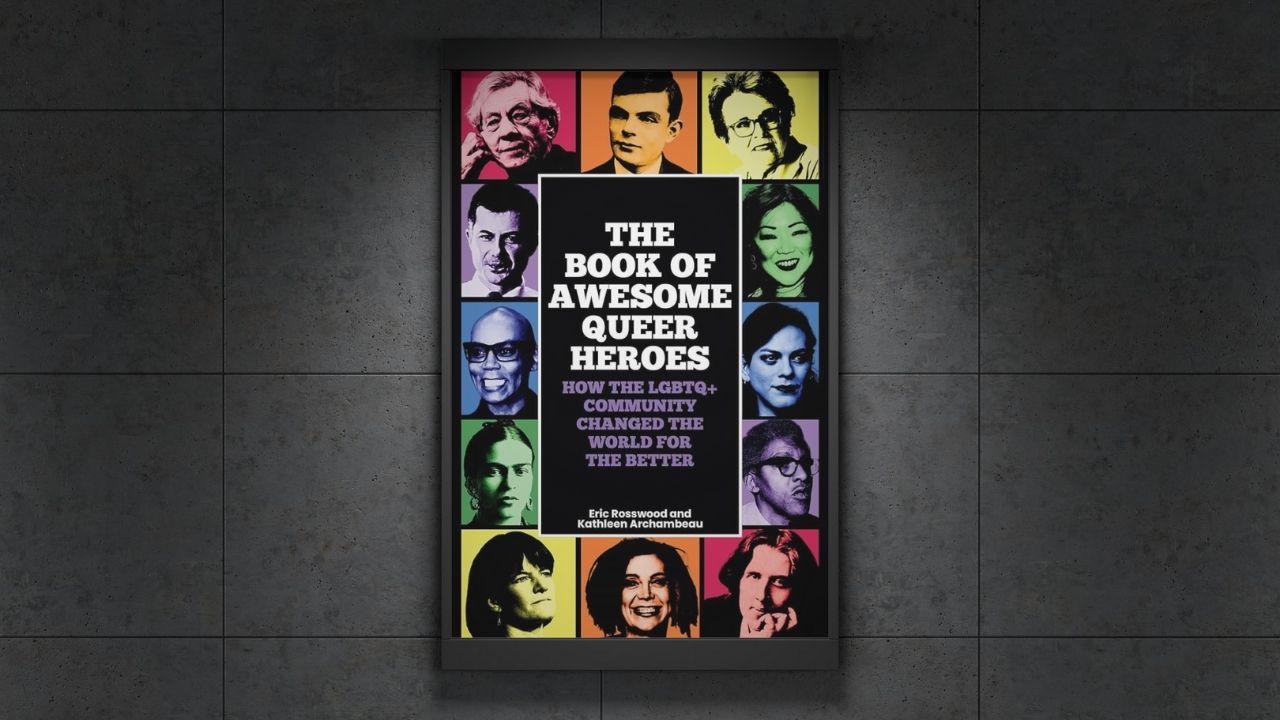Fantasy literature has always been a window into worlds of wonder, filled with heroic figures who inspire readers to dream big and face challenges with courage. But for many readers, these heroes often lack one essential quality: representation. In a genre that thrives on exploring the extraordinary, the inclusion of queer heroes has become a powerful tool to reflect the diverse tapestry of human experience.
Queer heroes in fantasy do more than simply fill a void; they challenge traditional notions of heroism by introducing narratives that grapple with complex identities, resilience, and belonging. By stepping into roles historically reserved for more conventional archetypes, these characters reimagine what it means to be a hero.
This article delves into how queer heroes redefine heroism within the fantasy genre, offering fresh perspectives and empowering readers. As the demand for inclusivity continues to grow, fantasy literature has emerged as a fertile ground for exploring identity and representation, creating stories that resonate with wider audiences while challenging outdated conventions.
By celebrating these characters and the authors who bring them to life, we explore how queer representation transforms fantasy literature, proving that diversity not only enriches storytelling but also redefines the boundaries of heroism itself.
Setting the Stage: Fantasy and the Quest for Representation
Fantasy literature has a rich history rooted in myths, folklore, and epic tales, often showcasing heroic journeys that embody universal values such as bravery, sacrifice, and perseverance. Classic works like The Lord of the Rings and The Chronicles of Narnia established archetypes—such as the noble warrior, the wise mentor, and the chosen one—that have shaped the genre for decades. However, these stories, while beloved, largely adhered to narrow definitions of heroism and identity, often sidelining or entirely omitting diverse perspectives.
As society has evolved, so too have the expectations of readers. Modern audiences increasingly demand stories that reflect the diversity of the real world. This push for inclusivity is not about tokenism but about enriching narratives with authentic, varied voices. Readers want heroes who not only embark on epic quests but also confront struggles that resonate with their own lives—whether those struggles involve identity, love, or belonging.
Queer heroes play a crucial role in this evolving landscape. They challenge the traditional molds of heroism, offering stories that explore the intersection of personal identity and larger-than-life adventures. By weaving queer identities into fantastical settings, authors break free from the constraints of stereotypes and offer readers characters who are complex, multidimensional, and relatable.
In a genre defined by its limitless imagination, the inclusion of queer heroes is not just a welcome change but a necessary one. These characters provide representation for readers who have long felt invisible in the stories they love, fostering empathy and understanding among all audiences. Queer heroes remind us that fantasy is not only about escaping reality but also about reshaping it into something more inclusive and affirming.
Exploring Queer Heroism
Defining Heroism Through a Queer Lens
Heroism has traditionally been defined by grand gestures: slaying dragons, leading armies, or sacrificing oneself for the greater good. While these acts remain central to fantasy literature, queer heroes bring a fresh perspective to what it means to be heroic. Their journeys often incorporate battles not only with external forces but also with societal norms, self-acceptance, and the quest for authenticity.
Queer heroes reshape traditional notions of heroism by embodying courage that extends beyond physical feats. Their strength lies in embracing their identities in worlds where they may face rejection, prejudice, or isolation. This duality—fighting external threats while navigating internal struggles—adds depth and relatability to their stories.
Intersectionality plays a key role in queer heroism. Many queer characters exist at the crossroads of multiple identities, such as race, gender, and class. These intersections create rich, multidimensional characters who exemplify resilience in the face of layered challenges. For instance, a nonbinary protagonist who must confront both a tyrannical empire and societal norms reflects the multifaceted nature of real-world struggles, making their victories all the more impactful.
Representation Beyond Stereotypes
Authenticity is crucial when portraying queer characters in fantasy. Historically, queer representation in media has been plagued by harmful tropes: the tragic queer character doomed to suffer, the flamboyant sidekick, or the villain whose queerness is tied to their moral failings. Modern authors, however, are breaking free from these clichés, crafting characters whose queerness is an integral but not reductive part of their identity.
For example, in The Priory of the Orange Tree by Samantha Shannon, Ead Duryan is a lesbian protagonist whose heroism stems from her unwavering loyalty, strength, and intelligence, rather than being defined solely by her sexuality. Similarly, Alix E. Harrow’s The Once and Future Witches features queer characters who navigate magical and societal challenges, showcasing rich, layered personalities without reducing them to stereotypes.
These nuanced portrayals allow queer heroes to exist as fully fleshed-out individuals, capable of love, fear, bravery, and flaws, just like their straight counterparts. By avoiding reductive characterizations, authors create heroes who resonate with readers on multiple levels, fostering a sense of belonging and representation.
Through redefining heroism and challenging stereotypes, queer characters in fantasy offer readers stories that inspire courage, celebrate authenticity, and prove that true heroism comes in many forms.
Notable Queer Heroes in Fantasy Literature
Queer heroes in fantasy literature are increasingly taking center stage, reshaping the genre with their unique perspectives and powerful narratives. Here, we highlight three standout characters and stories that have left a lasting impact on readers and the literary landscape.
Ead Duryan – The Priory of the Orange Tree by Samantha Shannon
Ead Duryan is a fiercely loyal and resourceful protagonist in The Priory of the Orange Tree. As a protector of Queen Sabran IX, Ead navigates a world on the brink of collapse due to the return of an ancient dragon. Ead’s queerness is an integral yet seamlessly woven part of her character, as she engages in a romantic relationship with another woman, all while fulfilling her duty as a member of a secret order.
Ead’s significance lies in her multidimensional portrayal—her sexuality is not a defining trait but one of many facets that make her a compelling character. By centering a queer woman of color in an epic fantasy narrative, Shannon challenges traditional archetypes and expands the possibilities for representation in the genre.
Moiraine Damodred – The Wheel of Time series by Robert Jordan
Though subtle in its presentation, Moiraine Damodred’s queerness is canonically confirmed in Robert Jordan’s sprawling The Wheel of Time series. Moiraine is a powerful Aes Sedai, whose intelligence, resourcefulness, and commitment to the battle against the Dark One make her one of the series’ most iconic characters.
Moiraine’s impact lies in her ability to exist as a queer character in a foundational work of modern fantasy. While her sexuality is not the focal point of her narrative, her inclusion as a queer hero in such an influential series has paved the way for broader acceptance of LGBTQ+ representation in mainstream fantasy.
Gideon Nav – Gideon the Ninth by Tamsyn Muir
In Gideon the Ninth, Tamsyn Muir introduces readers to Gideon Nav, a lesbian swordswoman with a sharp wit and a penchant for rebellion. Set in a gothic, necromantic universe, Gideon’s story blends humor, horror, and intrigue. Her loyalty to her companion Harrowhark, alongside her relentless determination, establishes her as an unforgettable hero.
Gideon’s significance lies in how Muir fully embraces her queerness without apology, integrating it into a narrative that is as bold and unconventional as its protagonist. The novel has become a cult favorite, resonating with readers for its unapologetic embrace of queerness and its innovative storytelling.
These queer heroes exemplify the diversity and richness that queer representation brings to fantasy literature. They demonstrate how complex, authentic characters can redefine the genre, resonate with audiences, and inspire a new generation of readers and writers.
Themes of Identity and Belonging
At the heart of queer representation in fantasy literature lies a deep exploration of identity and belonging. These themes not only shape individual characters but also drive the broader narratives of their journeys, offering readers poignant reflections on real-world struggles and triumphs.
Navigating Identity Within Fantastical Worlds
Fantasy worlds often mirror the complexities of real societies, making them a rich backdrop for exploring identity. Queer heroes in these settings face challenges that range from self-acceptance to societal rejection, all while navigating the pressures of their extraordinary roles.
For instance, in She Who Became the Sun by Shelley Parker-Chan, Zhu Chongba grapples with questions of gender identity while pursuing power and survival in a harsh, patriarchal world. The fantastical elements amplify Zhu’s internal struggles, creating a layered narrative that delves into how identity can be both a source of strength and vulnerability.
The genre allows for unique explorations of identity by blending the personal with the mythical. Characters can manifest their journeys of self-discovery through magical transformations, prophetic destinies, or battles against oppressive systems, making their struggles and victories resonate universally.
The Role of Chosen Family and Community in Queer Narratives
Chosen family—a recurring theme in queer narratives—holds special significance in fantasy literature. Often, queer characters find support and belonging in unconventional communities that accept and celebrate them for who they are.
For example, the found family in Becky Chambers’ The Long Way to a Small, Angry Planet demonstrates the importance of acceptance in a world filled with prejudice and division. Though not a traditional fantasy, its speculative setting highlights how chosen families can provide a safe haven where characters grow and thrive, free from societal judgment.
These relationships serve as a counterbalance to the isolation many queer characters experience, offering a source of strength and solidarity as they face external and internal challenges. In fantastical worlds, chosen families often become the emotional core of the story, emphasizing that belonging is not about conformity but about connection.
Representation of Internal and External Struggles
Queer heroes in fantasy often embody the dual struggle of confronting both external adversaries and internal conflicts. Their battles are not limited to slaying monsters or overthrowing tyrants—they also include navigating self-doubt, identity, and the scars of societal rejection.
In T.J. Klune’s The House in the Cerulean Sea, Linus Baker, a gay protagonist, must reconcile his duty as a caseworker with his growing empathy for the magical children in his care. Linus’s internal journey toward self-acceptance and embracing love mirrors the external challenges he faces, creating a narrative that intertwines personal growth with broader social themes.
By portraying these struggles, fantasy literature provides a safe space for readers to explore their own identities and challenges. These stories remind us that heroism often comes not from external victories but from the courage to be true to oneself.
The themes of identity and belonging are central to the transformative power of queer narratives in fantasy. By navigating complex identities, forging chosen families, and overcoming layered struggles, these stories offer both representation and inspiration, proving that the journey to belonging is as heroic as any quest for a magical artifact or battle against darkness.
The Influence of Queer Heroes on Readers
Queer heroes in fantasy literature wield a unique power to inspire, empower, and transform their audiences. By centering diverse experiences in extraordinary worlds, these stories create connections that resonate deeply with queer readers while fostering greater empathy and understanding among all audiences.
Inspiring and Empowering Queer Readers
For queer readers, seeing themselves reflected in the heroic figures of fantasy literature is both validating and empowering. These characters show that queer individuals can be the central figures in epic tales, proving that they are just as capable of bravery, love, and triumph as anyone else.
Characters like Harrowhark Nonagesimus from Gideon the Ninth or Tamsyn Muir’s other brilliantly crafted queer protagonists provide role models who defy convention. They inspire readers to embrace their unique identities and find strength in their differences. For many, these stories offer a sense of belonging, showing that queer experiences are worthy of celebration and central to compelling narratives.
By placing queer characters in positions of power and significance, these stories challenge societal norms and encourage readers to imagine a world where authenticity is a heroic trait.
Encouraging Empathy and Understanding Among Broader Audiences
Queer heroes not only empower those who identify with them but also challenge other readers to expand their perspectives. By presenting queer identities in relatable, nuanced ways, these stories humanize experiences that some readers may not have encountered personally.
Fantasy literature has always excelled at bridging divides, inviting readers into worlds unlike their own. Including queer heroes within these narratives fosters empathy by allowing audiences to experience the struggles, joys, and triumphs of queer characters. Books like Becky Chambers’ A Psalm for the Wild-Built highlight themes of connection, identity, and understanding in ways that resonate universally, regardless of the reader’s background.
This growing inclusivity helps dismantle stereotypes, broadening horizons and fostering a more compassionate view of the world.
Expanding the Boundaries of Fantasy as a Genre
Queer representation in fantasy is not just about adding diversity; it’s about transforming the genre itself. By breaking away from traditional archetypes and narratives, queer heroes expand what is possible within fantasy literature.
Their stories often blend elements of identity, culture, and community with the genre’s hallmark themes of adventure and magic. This fusion creates richer, more complex worlds and plots that appeal to a wide range of readers. Queer-led narratives challenge authors to think beyond conventional storytelling, resulting in innovative works like Ryka Aoki’s Light From Uncommon Stars, which blends science fiction, fantasy, and queer themes seamlessly.
As the boundaries of the genre continue to evolve, queer representation ensures that fantasy remains a dynamic and inclusive space for exploring the human experience in all its forms.
By inspiring queer readers, fostering empathy, and reshaping the genre’s possibilities, queer heroes in fantasy literature demonstrate the transformative power of representation. These stories remind us that diversity enriches not just the pages we read but also the worlds we imagine and the lives we lead.
Recommendations for Readers
For readers looking to explore fantasy stories with strong queer protagonists, the following books offer compelling narratives, richly developed characters, and themes that redefine heroism and identity. These works showcase the transformative power of inclusivity in the fantasy genre and are must-reads for fans eager to discover fresh perspectives.
The Priory of the Orange Tree by Samantha Shannon
This epic fantasy weaves a world of political intrigue, ancient dragons, and forbidden magic. Ead Duryan, a queer woman and a secret protector of her queen, is a standout protagonist whose bravery and intelligence drive the narrative. The book’s intricate world-building and diverse characters make it an essential read for fans of high fantasy seeking inclusive representation.
Why it’s a must-read: The story delivers a rich tapestry of cultures, faiths, and relationships, demonstrating that love and identity are as central to epic tales as dragons and quests.
Gideon the Ninth by Tamsyn Muir
A blend of necromancy, gothic mystery, and sardonic humor, Gideon the Ninth introduces Gideon Nav, a lesbian protagonist with a sharp tongue and even sharper sword skills. Her complicated relationship with Harrowhark Nonagesimus forms the emotional core of this inventive and genre-bending narrative.
Why it’s a must-read: Tamsyn Muir’s writing is bold, witty, and unapologetically queer, making this series a refreshing departure from traditional fantasy tropes.
A Marvelous Light by Freya Marske
Set in Edwardian England, this fantasy romance follows Robin Blyth, a gay man who accidentally stumbles into a world of magic. His partnership with Edwin Courcey, a reserved magician, evolves into a captivating blend of mystery, romance, and magic.
Why it’s a must-read: This book seamlessly combines historical fantasy with queer romance, offering an enchanting and emotionally resonant story.
She Who Became the Sun by Shelley Parker-Chan
This reimagining of China’s Ming Dynasty introduces Zhu Chongba, a genderqueer protagonist who assumes her brother’s identity to claim greatness in a patriarchal world. The book delves into themes of ambition, identity, and survival in a beautifully crafted historical fantasy setting.
Why it’s a must-read: The story’s exploration of gender and power dynamics is as profound as its vivid world-building and gripping narrative.
The House in the Cerulean Sea by TJ Klune
This heartwarming tale follows Linus Baker, a gay caseworker tasked with evaluating a magical orphanage. As Linus learns to embrace love and community, the book delivers a touching narrative about acceptance and the power of chosen family.
Why it’s a must-read: Its blend of whimsy, warmth, and queer representation makes it a comforting yet thought-provoking read.
Why These Stories Matter
These books are more than just entertaining reads; they challenge traditional fantasy conventions, offering fresh and authentic perspectives. They provide representation for readers who have long sought to see themselves in the genre’s heroes while inviting all audiences to expand their understanding of identity, resilience, and belonging.
Whether you’re a long-time fantasy fan or new to the genre, these stories are sure to captivate your imagination and leave a lasting impression.
Challenges and the Road Ahead
While the inclusion of queer heroes in fantasy literature marks significant progress, there are still many challenges to overcome in achieving truly authentic representation. As the genre continues to evolve, authors, publishers, and readers all play crucial roles in supporting diversity and creating space for more inclusive stories.
Persistent Challenges in Achieving Authentic Representation
One of the key challenges in achieving authentic queer representation in fantasy is overcoming stereotypes. For years, queer characters were relegated to secondary or stereotypical roles, often portrayed through a narrow lens of tragedy, villainy, or comic relief. Although recent works have pushed against these limitations, there is still a tendency for queer characters to be defined primarily by their sexuality, rather than as fully realized individuals with rich personalities and motivations.
Another challenge is the historical lack of queer voices in the authorship of fantasy. Many of the genre’s foundational works were created by writers who did not explore or include queer identities, resulting in narratives that often reflect only the experiences of a limited demographic. While progress has been made, there is still a need for more queer authors to tell their own stories and for greater diversity within the publishing industry itself.
Additionally, there remains resistance in certain circles, both within the genre and in wider society, to fully embrace diverse characters. Whether in the form of backlash against “politically correct” storytelling or the hesitance to include underrepresented identities in mainstream works, this resistance can slow the progress toward more inclusive narratives.
The Role of Authors, Publishers, and Readers in Supporting Diversity
Authors are at the forefront of pushing boundaries and creating diverse, authentic characters. By writing queer heroes as complex individuals with depth, flaws, and triumphs, authors can help dismantle the stereotypes that have plagued the genre. Additionally, queer authors can provide valuable perspectives that bring authenticity and lived experience to their characters.
Publishers also play a critical role in supporting diversity by actively seeking out stories that feature queer protagonists. Encouraging a diverse range of voices—whether through representation on the editorial team or in the types of manuscripts they choose to publish—can help make the genre more inclusive. Publishers must also ensure that these stories receive the same level of promotion and visibility as more traditional narratives, allowing diverse voices to reach the readers who most need to see them.
Readers are not passive in this process. The demand for more inclusive stories, through purchasing books, engaging with authors on social media, and supporting queer-centered narratives, can push the market toward greater diversity. Positive feedback from readers can also encourage more authors to explore queer characters and stories, creating a cycle of representation and growth. Readers also have a responsibility to hold publishers accountable for fostering diversity and to seek out underrepresented voices in order to ensure that a wider array of experiences is reflected.
Opportunities for Future Growth in the Genre
The future of queer representation in fantasy is bright, with several exciting opportunities for growth. One of the most promising areas is the ongoing expansion of intersectional queer characters—those who exist at the crossroads of multiple identities. These characters can reflect a variety of experiences, such as queer characters of color, transgender protagonists, or those with disabilities, offering more nuanced and complex stories that resonate with an even broader audience.
Additionally, as fantasy literature becomes increasingly diverse, there are opportunities for new subgenres and hybrid forms of storytelling to emerge. For example, queer characters could take center stage in space operas, urban fantasy, or historical fantasies, further expanding the genre’s scope.
With greater access to self-publishing platforms and digital publishing, authors are also gaining more freedom to tell their stories without the gatekeeping that often occurs in traditional publishing. This democratization of publishing allows for even more diverse voices to be heard, pushing the genre toward greater inclusivity.
As the landscape of fantasy literature continues to evolve, the road ahead is full of potential. While challenges remain, the growing presence of queer heroes signals a shift toward more inclusive, representative storytelling. Through the efforts of authors, publishers, and readers, the genre can continue to break barriers, creating richer, more diverse worlds that reflect the complexities of identity and the universal quest for belonging.
Conclusion
In exploring the realm of queer heroes in fantasy literature, we’ve uncovered the transformative power of representation. These characters not only challenge traditional notions of heroism but also highlight the complexities of identity, belonging, and resilience. Queer heroes bring authenticity to the genre, allowing for the exploration of intersectional identities and providing readers with stories that resonate on a deeply personal level.
From redefining what it means to be a hero, to offering diverse representations that avoid harmful stereotypes, these stories show that heroism is not a one-size-fits-all concept. Queer characters in fantasy literature inspire readers by demonstrating that strength, courage, and love come in all forms. Whether they are fighting dragons, navigating magical realms, or simply trying to find their place in the world, these heroes show that every journey is valid and important.
The inclusion of queer protagonists in fantasy has the potential to transform the genre, enriching its diversity and expanding the scope of what is possible in storytelling. These characters offer hope, representation, and a mirror for those who have long felt unseen, while also challenging broader audiences to expand their empathy and understanding.
As readers, it’s important to continue supporting these diverse stories and advocating for greater inclusion in the literary world. By seeking out and championing works that center queer heroes, we help create a future where all identities are celebrated and stories of all kinds are told.
So, whether you’re new to the genre or a long-time fan, take the opportunity to explore the rich, diverse world of queer fantasy literature. By doing so, you’re not just enjoying captivating narratives—you’re contributing to a literary revolution that empowers, inspires, and transforms both readers and the genre itself.




